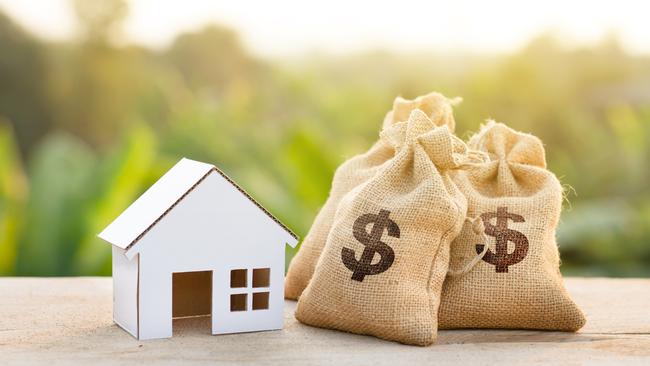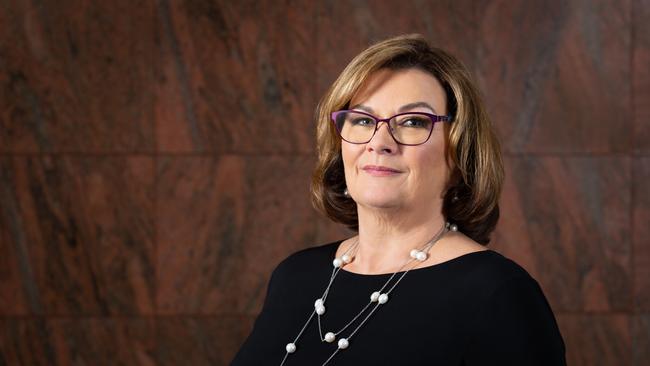Borrowing proves popular with property investors, but not shares
Investors have used borrowed funds to multiply their gains – and sadly their losses – for decades, but it’s lost a little lustre lately.

Business
Don't miss out on the headlines from Business. Followed categories will be added to My News.
Borrowing to invest is a big business in Australia, though no longer as big for shareholders as it was a couple of decades ago.
Investors continue to borrow billions of dollars to buy rental properties, despite high interest rates. But using borrowed money to buy shares has lost some lustre since the Reserve Bank of Australia started raising its cash rate in 2022.
Some loans for shares have been on a downward trend since late 2007 when margin loans were booming and 248,000 investors had borrowed a combined $40bn, with their shares used as security for their loans.

This article is from The 2024 Barron’s Top 150 Financial Advisers magazine which is published in The Australian on November 21.
Many of them were crushed by the global financial crisis, being hit by margin calls and forced to sell shares to cover their loans as global stockmarkets plunged – including a 55 per cent fall in Australia.
Today, margin lending is still way below its pre-GFC peak, with 81,000 investors holding $15.7bn of debt, according to the latest Reserve Bank statistics.
Meanwhile, loans for investment housing have climbed 12 per cent in the past five years, from $664bn to $745bn.
Lending for owner-occupier housing has increased three times as fast in the same period, up 39 per cent from $1.14 trillion to $1.58 trillion, Reserve Bank figures show.
AMP chief economist and head of investment strategy Shane Oliver says higher interest rates have dampened some enthusiasm for borrowing to invest.
“People aren’t as keen as they once were, but there is still an appetite for it,” he says. “Markets have been strong and they have still been earning more than the interest they pay.”
Borrowing to invest increases both gains and losses, through leverage of other people’s money – usually via a bank – when combined with an investor’s own funds.
It’s most common among the nation’s 2.2 million property investors, who typically don’t have a spare $600,000 or more lying around to buy real estate, so they stump up 20 per cent and borrow the rest.
Investors often use equity in their own home as the deposit for an investment property, so they don’t spend a dollar of their own money on the purchase, while rent paid by the tenant covers much of the mortgage repayments and other costs.
This gearing gamble has paid off handsomely in recent years for many landlords. If you live in a city where house prices climb 20 or 30 per cent over a few years, you not only benefit from the value increase of your own home but also that of one or more investment properties.

High interest rates haven’t helped, though, but investors can claim a tax deduction when their expenses such as interest, council rates and management fees exceed their rental income.
These negative-gearing deductions continue to be controversial; the Greens want them banned and investors fear federal Labor will put the issue back on its agenda even though its proposed changes in 2019 arguably contributed to it losing the election.
Marinis Financial Group CEO Theo Marinis says negative gearing remains popular for investors but political machinations are putting a cloud over it.
“With governments looking at negative gearing, it might put people off,” he says. “Gearing magnifies the returns and can also magnify the losses.”
Marinis prefers to see loans for shares through property equity rather than margin loans, which he sees as more risky because if the share portfolio falls below a certain level investors must pay up. “In general, I say, be very cautious about borrowing to invest, and (using) your home is less frightening than margin lending,” he says.
JBS Financial Strategists CEO Jenny Brown says she is not seeing as much investment borrowing among clients as pre-GFC.
“For the right client, it’s a good strategy, but you need to be mindful and understand the pros and cons – especially the cons,” she says. “The problem you have got with margin loans is you are looking at 9 to 11 per cent to borrow, so how are you going to get the returns to make it viable? That’s one of the reasons margin lending has gone out the door.”
Brown says many property investors are wary after being stung by Victorian government tax changes: “It’s a big issue with a lot of investors.” Borrowing to invest will remain popular among some investors, she believes, but will likely be tempered by wariness.
“Make sure whatever you are investing in is going to give you an after-tax return greater than what the interest rate is,” she says.

Her clients favour borrowing to buy property rather than to buy shares.
“They are using equity in their house and going into direct property,” says Brown. “I think Australians understand property more, to a point. They can see it, touch it and feel it.”
MBA Financial Strategists director Darren James says Reserve Bank interest rate rises in recent years have affected people who are considering investment loans.
“Yes, the level of interest rates has had an impact, but the performance of most investments – be it property or shares – has being doing very well,” he says.
“Margin lending has been out of favour because of the interest rates … investors have to get a return on investment.”
Overall, borrowing to invest is “as popular as it has been since the GFC”, according to James.
“Typically, it’s a line of credit on their home or restructuring debt rather than going down the margin lending path,” he says. “We know that property investment and negative gearing still work, but scaring people at the moment is the rhetoric coming out of the government about what they are going to do about negative gearing.”
More Coverage
Originally published as Borrowing proves popular with property investors, but not shares





